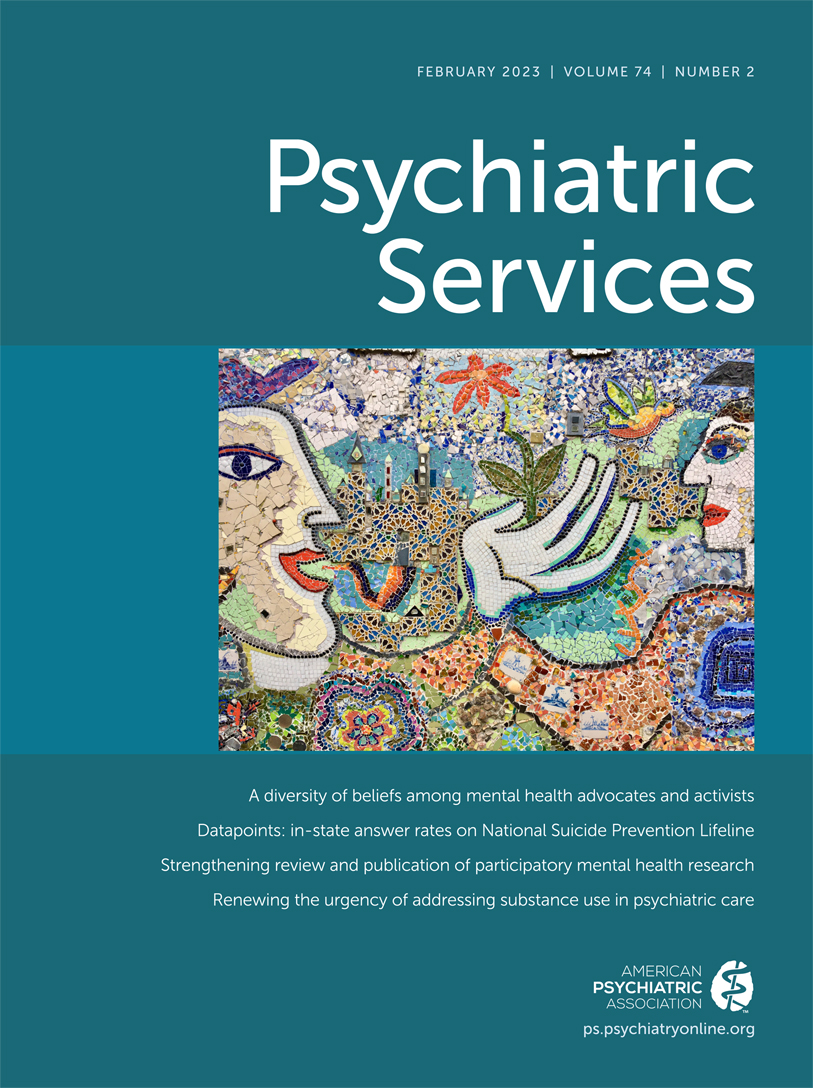Veteran Behavioral Health Care in the VHA and Elsewhere
In their study, Vanneman and colleagues (1) highlight differences in the amount and type of behavioral health care delivered directly through the Veterans Health Administration (VHA) and indirectly through VHA-purchased care from community providers. The findings demonstrate that between 2016 and 2019, approximately 20% of veterans’ behavioral health inpatient stays were at facilities outside of VHA hospitals. In the outpatient setting, only 3% of behavioral health visits were delivered by community providers. Given the long-standing VHA initiative to eliminate veteran suicide and the significant investment in outpatient behavioral health workforce transformation, this study is timely and important.
For years, the VHA has correctly identified growing behavioral health demand among veterans and a lack of specialty treatment access, especially in rural and underserved areas. One solution to mitigate this access challenge has been to purchase care in the community, thereby allowing eligible veterans to use their benefits outside the VHA for treatment services delivered by clinicians in closer proximity. Eligibility for community care is determined by geographic distance from VHA facilities, appointment waiting times, and other relevant factors. VHA community care pathways have been iteratively advanced through the Veterans Choice Act of 2014 and the MISSION Act of 2018. By 2021, almost one-third of veterans had received some type of community care.
However, findings to date on community care writ large have suggested suboptimal outcomes and even deficiencies. Multiple studies have demonstrated that some veterans prefer to receive care directly in the VHA, and others have found that certain types of treatment (e.g., evidence-based psychotherapy for posttraumatic stress disorder [PTSD]) and competencies (e.g., military cultural awareness) may be challenging to find in the community. Further, when veterans seek behavioral health care through community providers, they may encounter access challenges that historically have been associated with civilian treatment, such as engaging with members of a specialty behavioral health workforce that disproportionally resides in major coastal urban areas and practices outside of insurance networks. Further, numerous nonprofit organizations have been established to offset the veteran behavioral health need, which has led to additional treatment fragmentation and confusion. Vanneman’s finding that only 3% of veteran behavioral health outpatient services are delivered through community care may be partially attributable to these veteran preferences and structural barriers.
In outpatient behavioral health care, giving veterans theoretical access to community clinicians is not sufficient; the VHA must also take steps to ensure that these providers are adequately trained, competent in military culture, truly available to veterans in need, and coordinated with other health care services. Vanneman et al. rightly acknowledge this point, noting that although the VHA cannot directly contract with community clinicians, it can compel third-party administrators of the Community Care Network (CCN) to ensure network adequacy and treatment quality. Further, the VHA can take additional steps to raise awareness of its training resources, which offer modules on PTSD and military cultural awareness, among others.
Similar principles apply to inpatient services, although community care is already being used more frequently in this setting, with one-fifth of behavioral health hospital stays being delivered outside of the VHA in recent years. Although the analysis does not definitively explain these trends, Vanneman et al.’s findings bolster their hypothesis that community care may be most urgently needed for acute behavioral health conditions, given that these conditions often require rapid treatment and family or community engagement.
With more inclusive eligibility criteria in the MISSION Act, VHA-purchased community care volume is likely to continue to grow. Therefore, the VHA increasingly needs to ensure that the CCN grows commensurately with demand and that community clinicians accepting VHA benefits are adequately trained. Finally, as the authors astutely note, coordination of care and seamless information exchange between the VHA and community providers are paramount.
Although VHA-provided community care will never fully replace VHA direct services, this alternative can offer veterans timely and high-quality care closer to home and should be considered a nationwide imperative. As the largest health care system in the country, the VHA must take responsibility to provide within-community VHA services collaboratively, thoughtfully, and equitably.
1. : Differences between VHA-delivered and VHA-purchased behavioral health care in service and patient characteristics. Psychiatr Serv 2023; 74:148–157Link, Google Scholar



